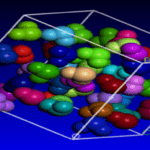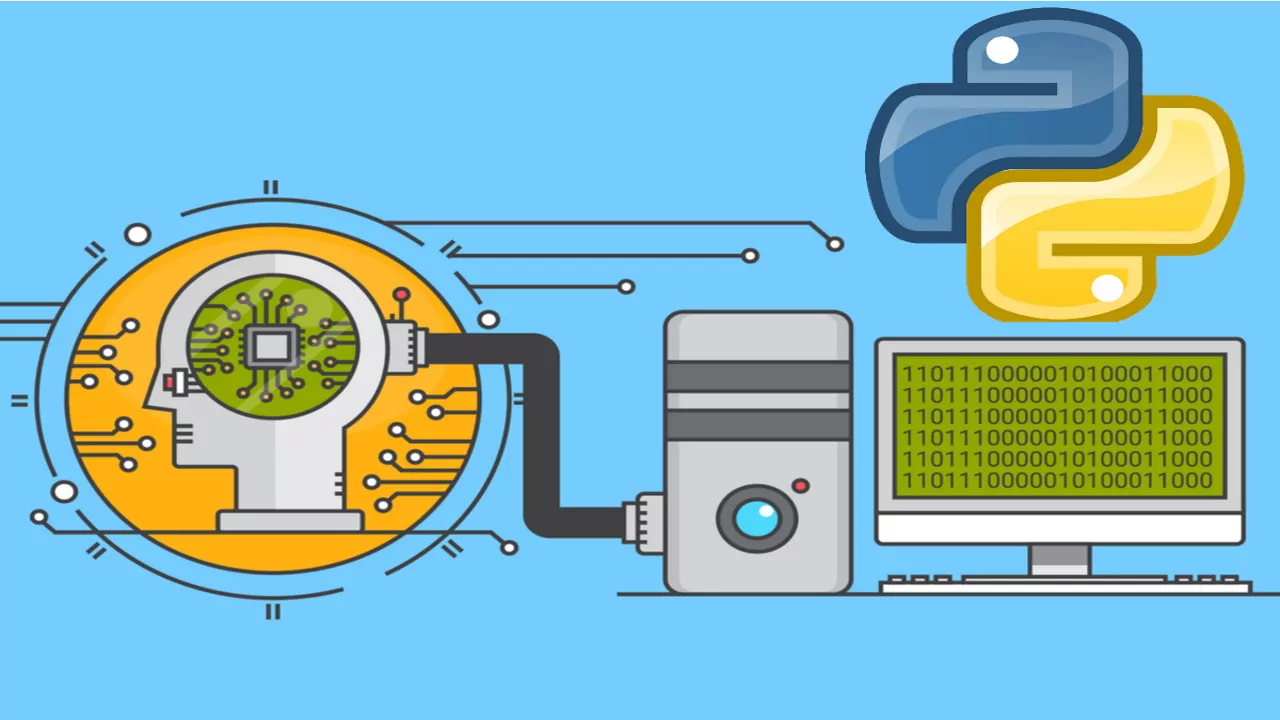
Machine Learning & Deep Learning with Python
مهر ۷, ۱۴۰۳
Data-Driven Molecular Design in Chemical Engineering
مهر ۷, ۱۴۰۳Introduction
The application of artificial intelligence and chemical engineering software in optimization is a rapidly advancing field that improves efficiency, safety, and cost-effectiveness. Here’s how to integrate artificial intelligence with chemical engineering to optimize industrial processes:
1. Process optimization
– Predictive analytics: AI algorithms analyze historical data to predict future process performance and enable proactive adjustments.
– Process control: Machine learning models optimize control parameters in real time and increase process stability and efficiency.
2. Quality control
– Anomaly detection: artificial intelligence systems detect deviations from normal operating conditions, guarantee product quality and reduce waste.
Defect prediction: Machine learning models predict potential product defects and enable early intervention.
3. Energy management
– Optimization of energy consumption: artificial intelligence optimizes energy consumption in chemical processes, reduces costs and environmental effects.
– Integration of renewables: Artificial intelligence helps integrate renewable energy sources into industrial processes and balance supply and demand.
4. Predictive maintenance
– Equipment health monitoring: AI analyzes sensor data to predict equipment failure, schedule maintenance before failure occurs.
– Lifecycle management: Machine learning models predict the remaining useful life of equipment and optimize replacement schedules.
5. Supply chain optimization
– Demand forecasting: Artificial intelligence models predict demand for products, optimize inventory levels and production plans.
– Logistics optimization: AI improves logistics planning, reduces shipping costs and improves delivery times.
6. Increased safety
– Risk assessment: Artificial intelligence assesses potential risks in processes and helps prevent accidents and improve worker safety.
– Event prediction: Machine learning models predict possible safety incidents and enable preventive actions.
7. Sustainable practices
– Waste minimization: AI optimizes processes to minimize waste generation and improve resource utilization.
– Environmental monitoring: artificial intelligence systems monitor greenhouse gas emissions and other environmental factors and ensure compliance with regulations.
8. Process design and simulation
– Process modeling: AI improves process simulation models and provides more accurate predictions of process behavior.
– Design Optimization: Machine learning algorithms optimize process design parameters for better performance and lower costs.

Case studies and applications
1. Chemical production: Artificial intelligence has been used to optimize the production of chemicals such as ethylene, where deep learning models predict reactor performance and adjust operating conditions in real time.
2. Drug manufacturing: In drug manufacturing, AI algorithms optimize fermentation processes and improve yield and consistency.
3. Refinery Operations: AI optimizes crude oil refining processes by adjusting parameters based on predictive models, resulting in more efficient operations and higher quality products.
For example:
A chemical plant produces high-purity chemicals using a multi-stage process involving reactors, separators, and distillation columns. The goal is to maximize yield and purity while minimizing energy consumption and raw material cost. This process is complex and has interdependent variables and parameters.
Application of artificial intelligence
1. Data collection and preprocessing
-Sensors and Internet devices are installed throughout the plant to collect real-time data on temperature, pressure, flow rates, chemical concentrations, and energy consumption.
– Historical data from previous production periods is also collected for training purposes.
2. Development of artificial intelligence model
– Machine learning algorithms, such as neural networks and support vector machines, are trained using historical and real-time data.
– Artificial intelligence models learn relationships between process parameters and output metrics such as yield, purity and energy consumption.
3. Process optimization
– Trained AI models are integrated with a process optimization software that continuously monitors plant performance.
– Using predictive analytics, the AI system identifies optimal operating conditions for reactors, separators and distillation columns.
– The system can adjust control variables such as feed rate, temperature and pressure to maintain optimal conditions in real time.
4. Abnormality detection and predictor maintenance
– Artificial intelligence algorithms analyze sensor data to detect early signs of equipment failure or deviation from normal operation.
– Predictive maintenance schedules are generated, allowing the plant to perform maintenance only when necessary, thus reducing downtime and maintenance costs.
5. Decision support
– The AI system provides insights and actionable recommendations to plant operators through a user-friendly interface.
– Operators can override AI recommendations when needed and ensure human oversight.
Benefits
– Increasing efficiency and purity: by continuously optimizing process parameters, the plant achieves higher efficiency and purer products.
– Energy efficiency: Optimizing energy consumption reduces operating costs and environmental impacts.
– Cost savings: reducing waste of raw materials and reducing maintenance costs leads to significant savings.
– Enhanced Safety: Early detection of anomalies and predictive maintenance improves plant safety and reliability.
– Scalability: the artificial intelligence system can be scaled and adapted to other production lines or factories within the company.

Python software and its application in artificial intelligence
Python is a powerful and versatile programming language widely used in artificial intelligence (AI) due to its simplicity, readability, and strong ecosystem of libraries and frameworks. Here are some key aspects of using Python in artificial intelligence:
Key libraries and frameworks
1. TensorFlow: An open source library developed by Google, TensorFlow is used for machine learning and deep learning applications. This allows the creation of large-scale neural networks with multiple layers.
2. PyTorch: Developed by Facebook’s Artificial Intelligence Research Lab, PyTorch is another popular open source machine learning library.
3. scikit-learn: A library for classical machine learning algorithms, scikit-learn provides simple and efficient tools for data mining and data analysis.
4. Keras: An open source neural network library written in Python, Keras can run on top of TensorFlow, Microsoft Cognitive Toolkit, or Theano. It is user-friendly, modular and extensible.
5. Pandas: This library provides data structures and data analysis tools for the integrated management of structured data, which is essential for data preprocessing in machine learning tasks.
6. NumPy: A basic package for scientific computing with Python, NumPy supports arrays, matrices, and high-level mathematical functions.
7. Matplotlib and Seaborn: These libraries are used for data visualization, which is very important for analyzing datasets and understanding the behavior of artificial intelligence models.

Applications in artificial intelligence
1. Machine Learning: Python is widely used to build machine learning models for tasks such as classification, regression, clustering, and dimensionality reduction.
2. Deep learning: Python is used with TensorFlow and PyTorch to design and train deep neural networks for tasks such as image recognition, speech processing, and autonomous driving.
3. Natural Language Processing (NLP): Libraries such as NLTK, SpaCy, and Hagging Face Transformers facilitate tasks such as text classification, sentiment analysis, language translation, and development of chatbots.
4. Computer Vision: OpenCV and other computer vision libraries allow Python to be used for image and video analysis, including object detection, face recognition, and motion tracking.
5. Reinforcement Learning: Python is used in the development of reinforcement learning algorithms where agents learn to make decisions by interacting with their environment, often used in games and robotics.
Advantages of Python in artificial intelligence
-Ease of learning: Python simple and readable syntax makes it accessible to beginners and experts alike.
– Community Support: Python has a large and active community that provides extensive documentation, tutorials, and forums for troubleshooting.
– Versatility: Python can be used in a variety of domains, from web development to scientific computing, making it a versatile choice for AI projects.
– Extensive libraries: The availability of a large number of libraries and frameworks speeds up development and reduces the need to write code from scratch.
– Integration: Python integrates well with other languages and tools, facilitating smooth workflows in diverse environments.
In short, Python’s extensive libraries, simplicity, and active community support make it an ideal choice for developing and deploying AI applications across multiple domains.

An example of using Python software and artificial intelligence in chemical engineering
Predicting and optimizing the separation process using machine learning:
In a refinery, it is important to separate a mixture of hexane and methylpentane efficiently and economically. This process is usually done using a distillation tower, which is a complex and energy-intensive process. Here, AI and Python can be used to predict and optimize the performance of the distillation tower:
Data collection: Data related to distillation tower performance, such as temperature, pressure, flow rate, and composition of feed and products are collected.
Data preparation: Data is prepared for modeling using machine learning algorithms, such as artificial neural networks.
Machine learning modeling: A machine learning model is used to predict the separation efficiency and energy consumption of the distillation tower based on the input data.
Advantages of using Python and artificial intelligence in this process
Increasing the separation efficiency:
The machine learning model can optimize the operating conditions to achieve the maximum separation efficiency of the target products, such as hexane.
Reducing energy consumption:
The model can determine the conditions for reducing the energy consumption of the distillation tower, which is a key factor in operating costs.
Cost reduction:
By increasing separation efficiency and reducing energy consumption, the overall costs of the separation process can be significantly reduced.
Faster decision-making:
The machine learning model can quickly simulate various operational scenarios and help operators make decisions faster and more efficiently.
In addition to this example, Python and artificial intelligence can be used for various other applications in chemical engineering, including:
Design and simulation of chemical reactors:
Machine learning models can be used to predict the behavior of chemical reactors and design more efficient reactors.
Defect detection and prediction:
Machine learning algorithms can be used to identify patterns indicating defects in process equipment and predict failures before they occur.
Product quality control:
Artificial intelligence can be used to inspect products and identify defects or impurities in order to ensure the quality of the final product.
Python is a popular language for chemical engineering applications due to its simplicity, flexibility and powerful set of libraries.

Example: Liquid-liquid process optimization using simulation, artificial intelligence and RSM
Suppose we want to optimize a liquid-liquid extraction process to separate a valuable substance from its mixture with impurities.
Steps:
Simulation:
First, we create a detailed simulation model of the liquid-liquid extraction process using chemical engineering simulation software such as Aspen HYSYS or ProSim. This model should include thermodynamic equations, phase equilibrium data and equipment specifications such as dimensions and type of trays or extraction tower packaging.
Experiment design:
Using statistical test design (RSM) methods such as factorial design or central composite design, we design a series of experiments to investigate the effect of various factors on process efficiency such as phase ratio, flow rate, and operating temperature.
Conducting experiment:
We conduct tests in real conditions in a pilot or semi-industrial unit according to the designed plan. During the tests, we collect data on product purity, extraction efficiency and energy consumption.
Modeling with artificial intelligence:
We use the data collected in step 3 to train an artificial intelligence model such as an artificial neural network or linear regression. This AI model will be able to predict the relationship between multiple inputs (operating conditions) and output changes (process performance) with high accuracy.
Optimization with RSM:
We use the AI model trained in step 4 as the objective function in RSM optimization algorithms such as random search or mathematical programming. These algorithms find optimal values for input variables (operating conditions) to achieve maximum extraction yield, product purity, or minimum energy consumption.
Verification and implementation:
We verify the optimal values obtained by RSM in a pilot or semi-industrial unit. If the results are satisfactory, they can be implemented on an industrial scale.

Advantages of this method
Accuracy: The combination of simulation, artificial intelligence and RSM can significantly increase the accuracy of process performance prediction models compared to traditional methods.
Speed: Using artificial intelligence to predict process performance significantly reduces the time and cost required to conduct tests. Optimization: RSM algorithms can effectively optimize operating conditions to achieve the best process performance.
Reducing energy consumption: By optimizing the process, you can reduce energy consumption and help preserve the environment.
Software
In addition to simulation software such as Aspen HYSYS and ProSim, various artificial intelligence tools such as TensorFlow and PyTorch as well as RSM or Python packages can be used to implement this method.
Conclusion
The integration of artificial intelligence with chemical engineering holds significant promise for optimizing industrial processes. By leveraging the strengths of both fields, industries can achieve higher efficiency, better quality control, increased safety, and more sustainable practices. As AI technology continues to advance, its applications in chemical engineering are expected to expand, leading to further innovation and improvement in industrial processes.


7 Comments
hello
Don’t be tired
Can you explain the difference between pure chemistry and applied chemistry?
hello
good day
thank you very much
Pure chemistry is more concerned with the research and study of chemical theories and the behavior of substances. Applied chemistry also focuses on the practical use of chemical principles in pharmaceuticals and the environment.
Can artificial intelligence play a role in the design of new catalysts in chemical engineering?
hellow
Yes, artificial intelligence can assist in the identification and design of new catalysts by analyzing data related to chemical compounds and reactions. These techniques can quickly identify the best options and help researchers expedite the catalyst development process
Are there currently real examples of successful projects in this field that demonstrate the application of artificial intelligence?
hellow
Yes, algorithms can be used in petrochemicals for process optimization, which is just one example, but there are many applications.
The content was useful. thank you very much